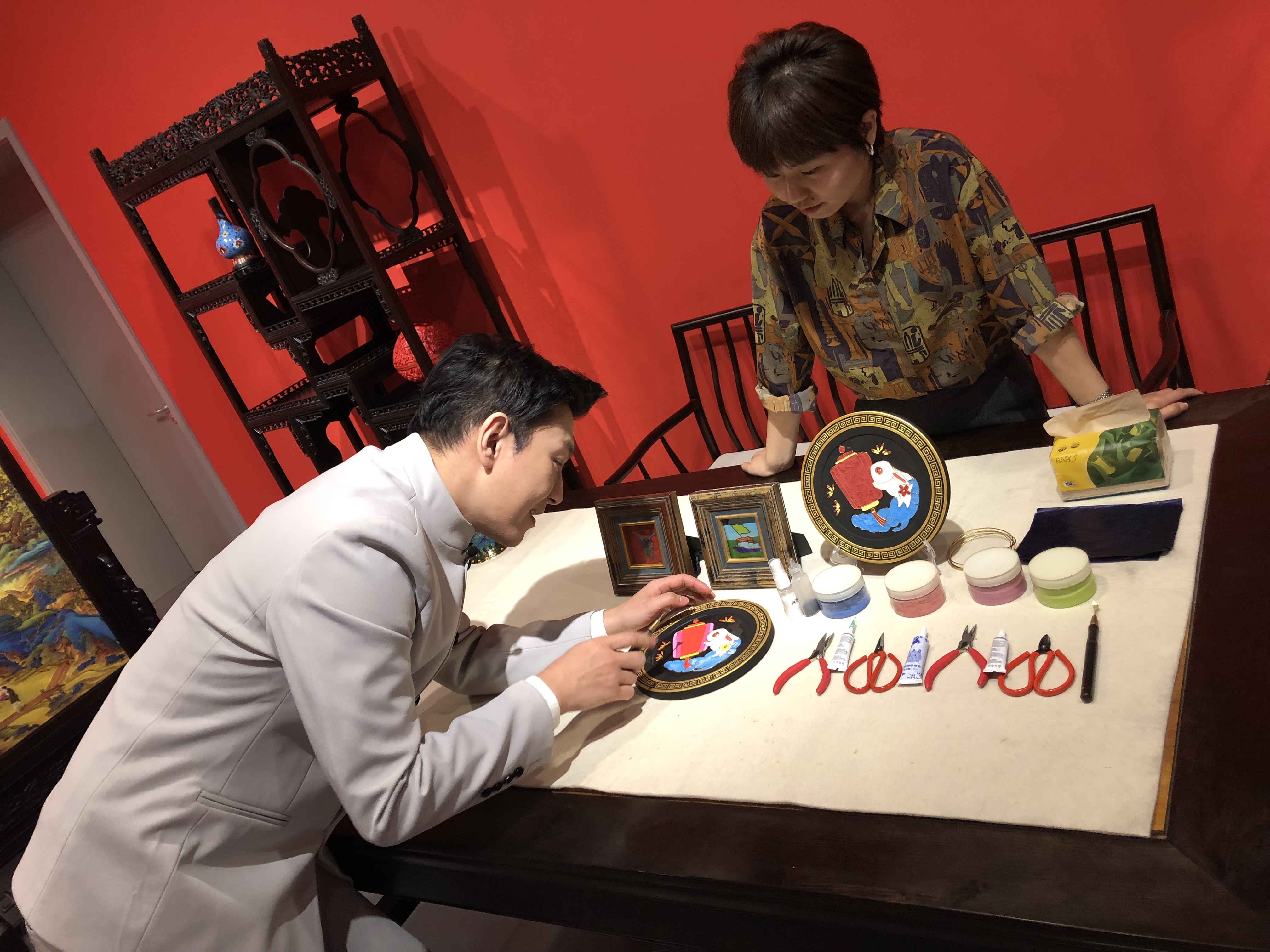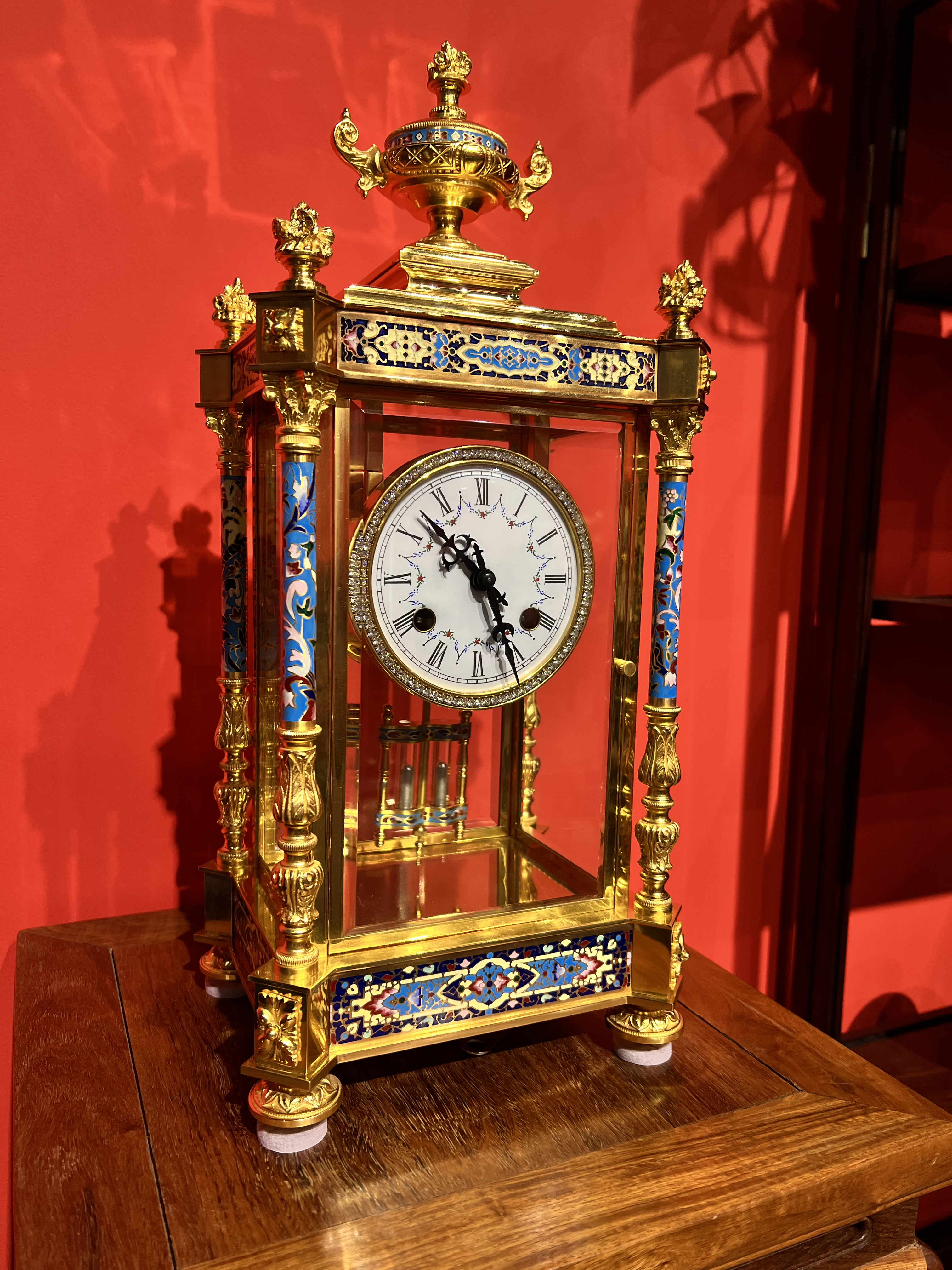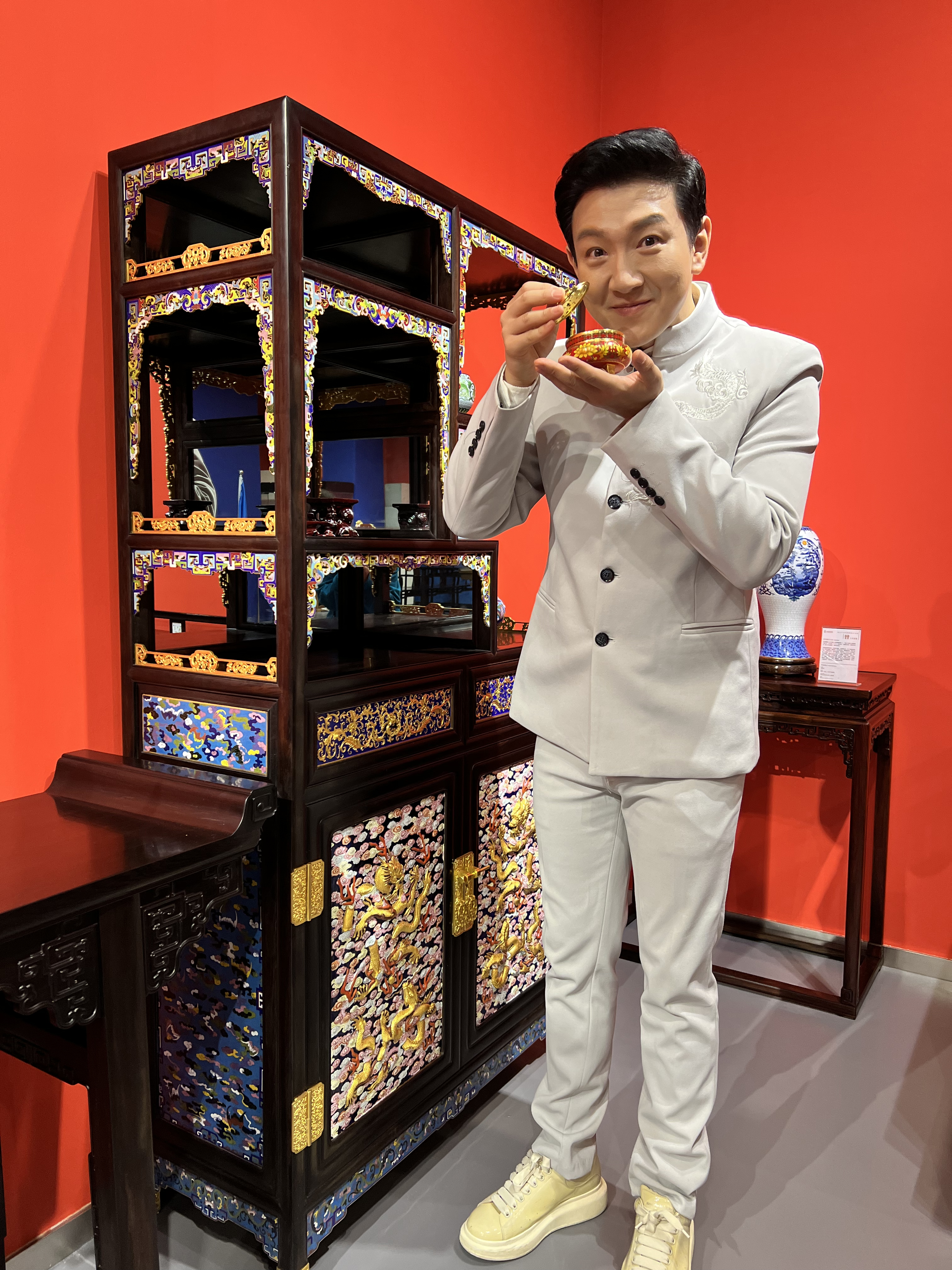
CGTN host Julian Waghann adds a touch of brilliance to the pre-existing splendor of a rabbit-themed filigree enamel painting while visiting the Sino-Foreign Enamel Gallery in Beijing, on March 7, 2023. /CGTN
CGTN host Julian Waghann adds a touch of brilliance to the pre-existing splendor of a rabbit-themed filigree enamel painting while visiting the Sino-Foreign Enamel Gallery in Beijing, on March 7, 2023. /CGTN
Standing as a cultural treasure of China, Jingtailan, or Chinese cloisonne enamel, represents one of the nation's most famous traditional handicrafts. It also enjoys an international reputation for its elegant shapes, graceful designs, elaborate patterns, and brilliant and dazzling colors. Dating back about 600 years, this time-honored art was added to China's national intangible cultural heritage list in 2006.

A cloisonne enamel timepiece is on display at the Sino-Foreign Enamel Gallery in Beijing, on March 7, 2023. /CGTN
A cloisonne enamel timepiece is on display at the Sino-Foreign Enamel Gallery in Beijing, on March 7, 2023. /CGTN
Also known as "copper padding thread weaving enamel," the technique traditionally uses copper as its base, decorated with patterns structured using copper wires and then painted with enamel glaze, featuring dozens of complicated processes.

A piece of cloisonne enamel on display at the Sino-Foreign Enamel Gallery in Beijing, on March 7, 2023. /CGTN
A piece of cloisonne enamel on display at the Sino-Foreign Enamel Gallery in Beijing, on March 7, 2023. /CGTN
Introduced to China during the Yuan Dynasty (1279-1368), the craft was said to see its techniques fully mature when Emperor Jingtai reigned during the Ming Dynasty (1368-1644). At that time, the works mostly boasted magnificent blue hues, hence its name Jingtailan, as "lan" means "blue" in Chinese.

CGTN host Julian Waghann visits the Sino-Foreign Enamel Gallery in Beijing, on March 7, 2023. /CGTN
CGTN host Julian Waghann visits the Sino-Foreign Enamel Gallery in Beijing, on March 7, 2023. /CGTN
During the course of the art's development over the centuries, craftsmen have endowed it with more variations, or possibilities, as an expression of their devotion. Filigree enamel painting, one of the most acclaimed breakthroughs, has extended the splendor of this ancient craft from a three-dimensional form to a flat surface, winning the hearts of younger generations. This is generally attributed to its consumer-oriented form of customization and the flexibility it offers by allowing people to choose their favorite patterns to create a unique enamel piece.

CGTN host Julian Waghann visits the Sino-Foreign Enamel Gallery in Beijing, on March 7, 2023. /CGTN
CGTN host Julian Waghann visits the Sino-Foreign Enamel Gallery in Beijing, on March 7, 2023. /CGTN
During his visit to the Sino-Foreign Enamel Gallery in Beijing, CGTN host Julian Waghann was not only treated to a dazzling display of elaborate enamel art, but also learned from staff there how this technique found its way to China by way of the legendary Silk Road.